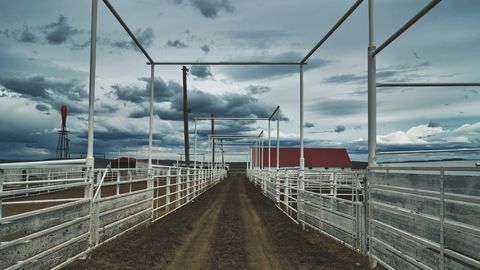Pasture vs Corral

As part of the Clean Water Act, Animal Feeding Operations (AFOs) and Concentrated Animal Feeding Operations (CAFOs) must meet certain water quality regulations. AFOs are any livestock facility/operation that has livestock in confinement for a total of 45 days or more in a 12-month period. It should be noted that the 45 days do not need to be consecutive days; nor, do the livestock need to be the same livestock. CAFOs are large AFOs, containing the equivalent of 1,000 or more animal units. An animal unit is the equivalent of one beef cow, or ~1,000 lbs. of animal.
In Utah, AFO/CAFO regulations:
- Prohibit discharges of feed or manure to waters of the state
- Prohibit livestock having direct access to a water of the state
- May require a nutrient management plan
Grazing operations are exempt from the AFO/CAFO regulations. So how does one determine if their livestock are in a pasture, or a corral? Although ultimately this determination is subjective, and up to the inspector, some general guidelines apply. A pasture area should have adequate, and desirable, vegetation growing over the entire area. In general, a good rule of thumb for “adequate” vegetation, is having a minimum of 4” of vegetation over the entire area. If most of the vegetation is shorter than 4”, it will likely be classified as a corral.
Adequate vegetation is needed for the plants to intercept, and utilize, the nutrients deposited in the urine and feces. Vegetation that is very short, and over-grazed, cannot intercept and utilize many nutrients making it more likely that surface water or groundwater contamination will result.

